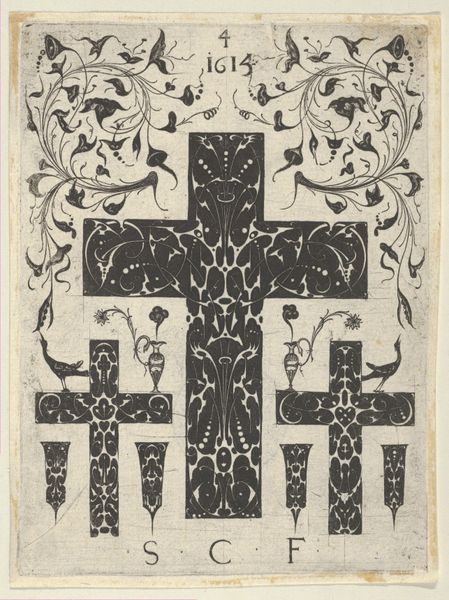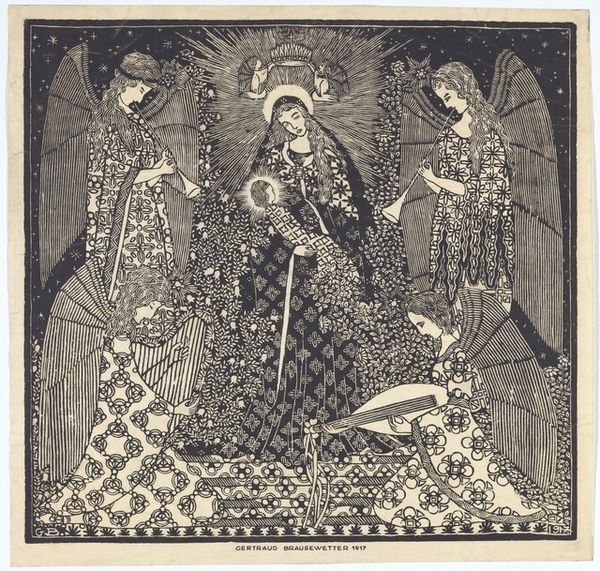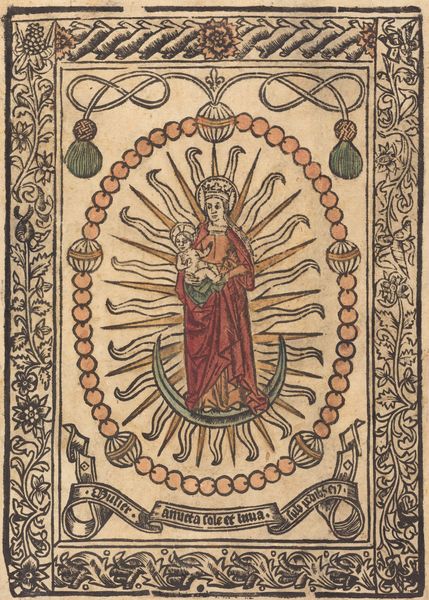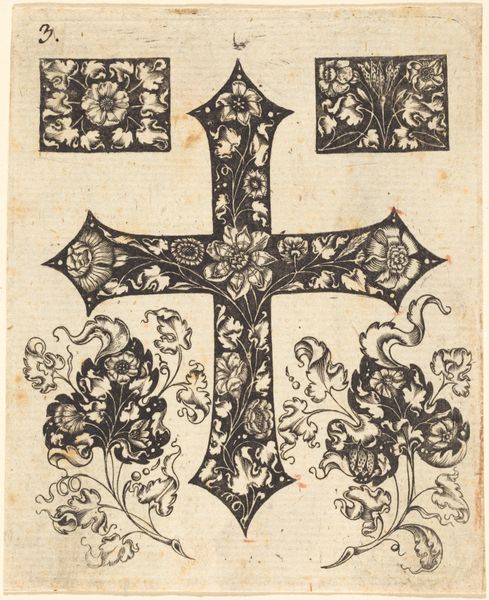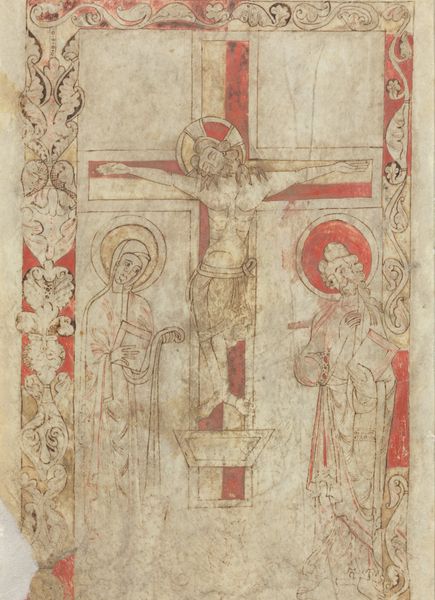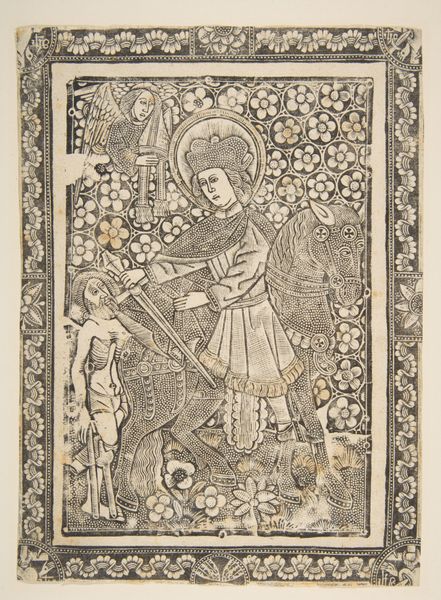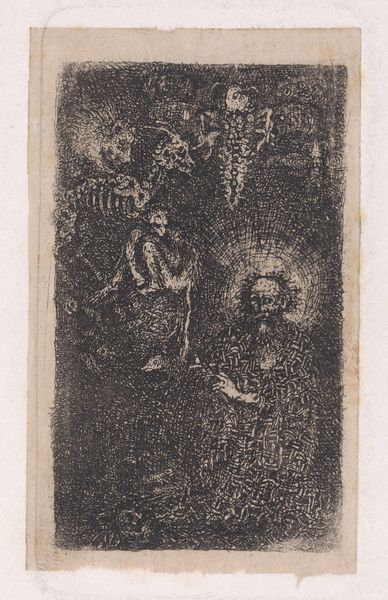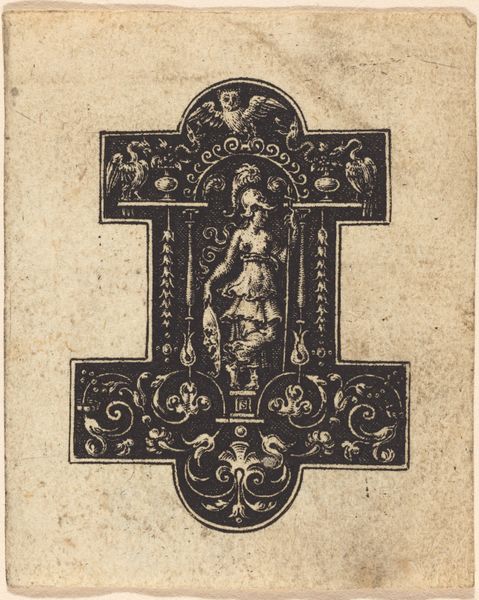
Christ on the cross flanked by the Virgin, Saint Brigit and Saint Elisabeth 1475 - 1485
0:00
0:00
drawing, print, intaglio, woodcut, engraving
#
drawing
#
pen drawing
# print
#
intaglio
#
figuration
#
woodcut
#
line
#
history-painting
#
italian-renaissance
#
engraving
Dimensions: Sheet: 14 in. × 10 3/16 in. (35.5 × 25.8 cm)
Copyright: Public Domain
Curator: Today, we are looking at an engraving from the late 15th century, likely created between 1475 and 1485, titled “Christ on the cross flanked by the Virgin, Saint Brigit and Saint Elisabeth.” Its creator remains anonymous. Editor: Wow, it feels intensely… celestial, yet grounded. All those stars speckled across a fairly rigid scene; it is as if suffering exists within a strange sort of infinite cosmos, right? I find that deeply affecting, especially for an early print. Curator: The print's power lies in its combination of familiar religious iconography and its construction within a specific historical context. The depiction presents Christ's sacrifice in dialogue with female sainthood, drawing focus onto Brigit and Elisabeth. Their positioning challenges a singular, patriarchal understanding of religious devotion. Editor: Oh, totally, you are spot on. I was just looking at Brigit. There’s a striking intimacy there. Look how her hands seem to just… float up, as if in supplication but also offering something back? The composition really draws your eye into that quiet exchange beneath the grand suffering, which is kind of lovely. Curator: Precisely. Furthermore, prints such as these facilitated broader accessibility to religious imagery, allowing for personal contemplation and solidifying devotion to specific saints, perhaps offering women a more accessible, female-centered devotional experience. Editor: That’s awesome! And what’s really striking is the use of line, like look at the Virgin's robe… each stroke feels so intentional. It is not just representation; it is creating an emotional landscape with density of lines. I like how the engraver created so much tone using simple lines to create very human moments. Curator: The use of engraving here really speaks to the cultural context, the ways in which these pieces were conceived for broad dissemination but rooted in a very specific religious, gendered, and social understanding. Editor: Definitely! Looking at it, I now feel I get it so much more—not just an image, but like a quiet revolution etched in ink! Curator: Absolutely, this engraving serves as a testament to the multilayered intersection of faith, artistry, and cultural agency that defines this historical moment.
Comments
No comments
Be the first to comment and join the conversation on the ultimate creative platform.

